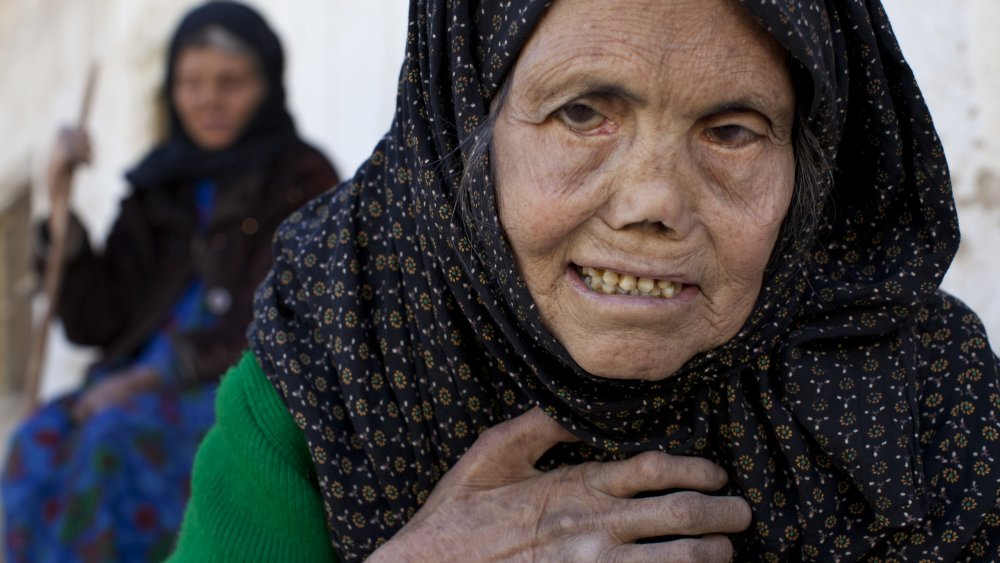The Messed Up History Of Leprosy
Leprosy, now known as Hansen's disease, has caused quite a stir through history. Today the condition is treated by antibiotics, but antibiotics weren't discovered until the 20th Century. For most of humanity's history, disease (of any kind) has been mysterious, with causes attributed to any number of factors, including a fair amount of superstition. We haven't, as a species, always had the best attitude towards those suffering from medical conditions. We can point to the use of leeches, or lobotomies, or any number of other misguided treatments. A disease like leprosy, with its profound, visible symptoms like discolored skin, odd growths, open ulcers, and facial swelling (per the Centers for Disease Control), was not only incurable, but terrifying.
Leprosy has been around long enough that it's mentioned in Judeo-Christian texts like the Bible. In that context, leprosy is described as a disease of uncleanliness, a curse from God, as the Nepal Leprosy Trust explains. The word "leprosy" shows up more in the Bible than in a modern pathology textbook, clocking in at a whopping 55 times in the Old Testament and 13 times in the New, relates Answers in Genesis. Jesus demonstrated that it was okay to touch lepers, and even cured lepers, but for many, the stigma remained.
A punishment from God
Nor were Judeo-Christian traditions the only ones to see leprosy as a curse. According to the Indian Journal of Medical Research, that's how the Hindu religious text Atharva Veda also refers to it. From Africa to Asia to Europe, everyone thought those poor souls, whose bodies were being slowly destroyed by a bacterial infection, were the sinners of the world, damned by gods, or cursed for some misdeed. People suffering from Hansen's disease in those times weren't exactly treated well.
Even now, people think leprosy is easily transmissible, when in reality it takes repeated and prolonged contact. People think they'll be doomed to a terrible death if they catch the disease when, in all reality, they'll probably make a full recovery as long as they have access to antibiotics. The afflicted have historically been cast out of their homes by family members and, in some places, the families give them funerals and claim their inheritance before the diseased are anywhere near leaving this world. According to News of Australia, in medieval Europe, it was commonplace for people with leprosy to be forced to wear signs and ring bells as a way of saying, "I have a disease. Stay away." Rather than, say, functioning as a call for empathy.
Shunned around the world
In older times, people afflicted with leprosy would usually be shunned, driven out of town, or forced to reside in a leper house. An entire colony wasn't too common back then, but they are reported to have been around since the Middle Ages in some way or another. Eventually, leper colonies developed — small settlements of sorts where those afflicted with the disease would face death, away from the general population.
The colonies also aimed to keep the disease from spreading to healthy populations. Imagine, if you will, authorities shuffling you onto a boat to be taken to an island somewhere, away from everyone and everything you've ever known, your property and land seized, all because you had the unfortunate luck of catching a bacterial infection. A few leper colonies, such as Spinalonga Leper Colony off Crete, says Atlantida, eventually allowed residents to have a school and operate their own businesses, but this wasn't necessarily the norm. Typically, residents of these colonies weren't allowed to participate in politics or commerce. Children born in leper colonies were often removed from their parents. Some residents opt to remain in these colonies even today, such as at Kalaupapa, located on the island of Molokai, Hawaii.


